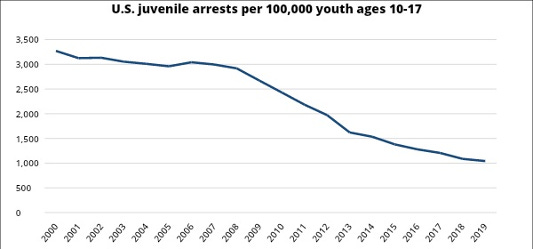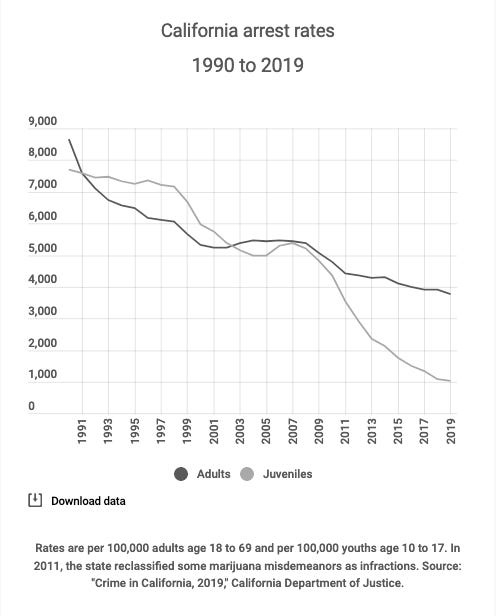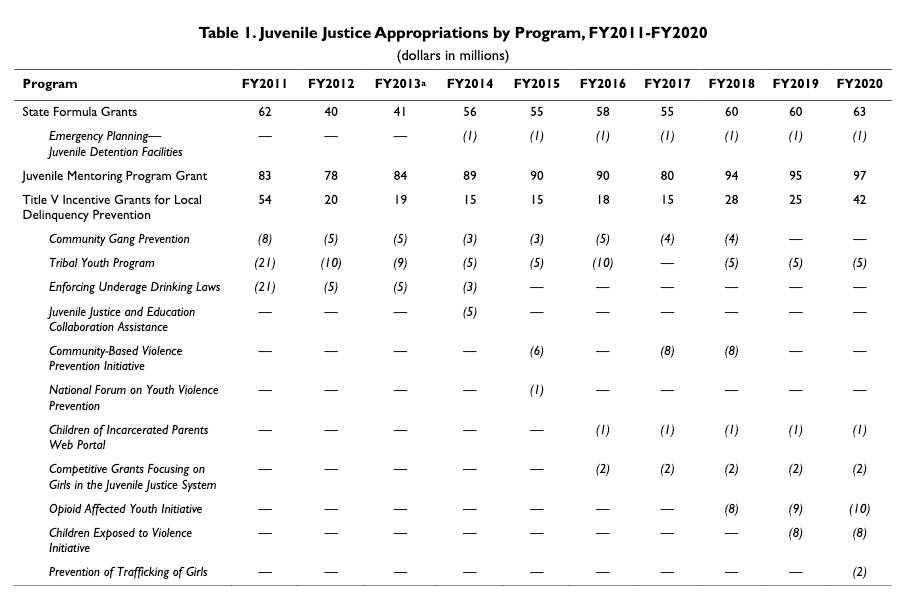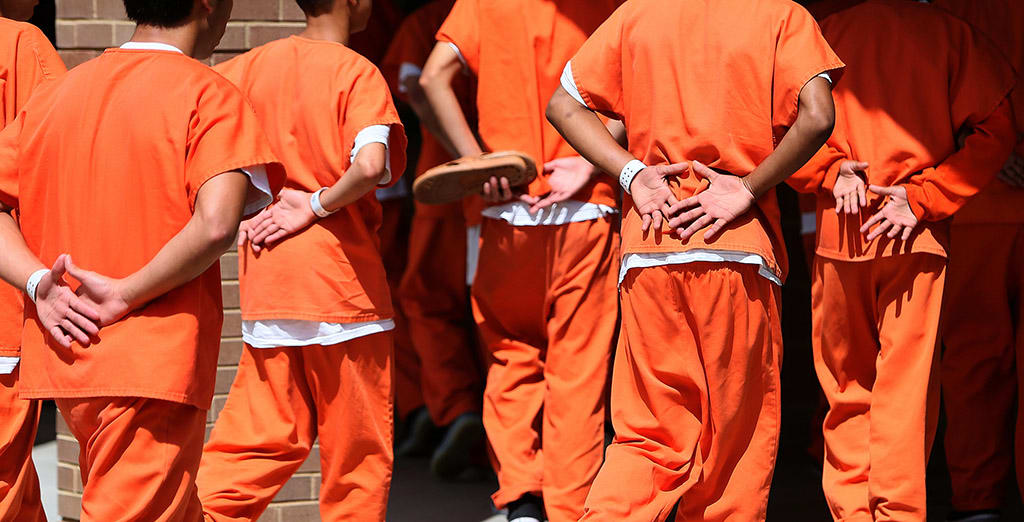Why is this a thing? The problem with heavy youth incarceration, the lack of restorative supports and the absence of a mental health focus…
With this many incarcerated young people in the United States, it’s hard not to see a future in further crisis. According to a 2019 Prison Policy Initiative study …
Every day, over 48,000 youth are held in facilities away from home as a result of juvenile or criminal justice involvement.
Over 16,858 youth on average are being held within detention centers. Roughly more than half the youth incarcerated are charged with non-violent offenses.

To dig further into this issue, we’ll need to examine the deep connection between childhood trauma and involvement in the justice system, as observed by an April 2021 study by the National Institute Of Justice. We know what childhood trauma is and how it inevitably has long lasting negative effects that extend deep into adulthood. Effects can be psychological, behavioral, social, and even biological. Some examples of long-term effects are risk for further victimization, delinquency, substance abuse, domestic violence, adult criminality, poor school performance, depression, and chronic disease. The CDC adds …
Adverse Childhood Experiences (ACEs) have a tremendous impact on future violence victimization and perpetration, and lifelong health and opportunity.
Many youth who’ve experienced traumatic events within the Divisional Juvenile Justice (DJJ) system are facing the consequences well into adulthood. It’s then taking a toll on their regular day-to-day life, and society has resorted to relying on an outdated system to punish rather than assist.
Researchers from a non-profit research organization Child Trends, which is focused on children’s issues, reported that a history of childhood maltreatment was associated with higher frequencies of overall violent and nonviolent offending.

By 2019, arrest rates for violent crimes fell substantially from the 1994 peak for every age group younger than 45
In recent years, we have seen a decline in some states for youth residing in juvenile detention, correctional, or residential facilities in the United States according to the Kids Count Data Center. A decline in the population of incarcerated youth reveals that calls for change in the U.S. justice system are beginning to resonate and grow into actual policy creation. However, it does not account for the thousands of youths institutionalized due to system-induced trauma. The youth that experienced horrific events within Divisional Juvenile Justice (DJJ) system are still largely ignored, along with youth today who’ve become victims of an outdated system that traumatizes youth and leads them to future criminalization through adulthood.
In July of 2023, DJJ prisons will stop taking new prisoners with “rare” exceptions. California is planning to close both its Ventura and Stockton Facilities, as mandated by a new state law and budget directive passed last year by Governor Gavin Newsom. This Los Angeles Times article reports many of those youth, however, will be sent to adult prisons. In 2019, the Center on Juvenile and Criminal Justice, a nonprofit group that advocates for the elimination of state youth facilities, reported that many operations were “poorly maintained.” It was reported DJJ facilities also lack adequate camera and video monitoring, putting youth at risk of violence and abuse that is hard to investigate and prosecute without evidence. DJJ was found to …
… abet violence, reinforce racial and ethnic conflicts, and legitimize institutional gangs.
One incarcerated under-18 California youth speaking on condition of anonymity tells theBEnote that he didn’t receive his psychiatric medication even though prior to his incarceration he always received a prescription on time. He is now told the prescriptions were not available during the intake period which defies best practices. There are countless witness testimonials of a system that’s both broken in processes and compassion. Added public awareness around this topic can help spur needed reforms. In the end, individuals this young shouldn’t be disposed to a prison system this old.
A Mental Health Crisis
Meanwhile, we have seen a decline in the youth arrest rates since 1990 (see below). Juvenile Justice systems do seem intent on committing funding streams towards developing programs that can assist youth inside and outside of facilities.

Part of that is in response to the fact that 1 in 5 Americans struggle with some form of mental illness – and that’s more likely to develop through childhood trauma. Often times youth may develop mental illness due to system-induced trauma: organized systems such as juvenile justice facilities, foster care, law enforcement, and court actions are usually responsible for building that trauma. Treatment programs, in the meantime, are designed for the youth’s well-being, but that doesn’t always mean they’ll work. Youth will then make decisions due to an absence of basic needs and support, whether it be safety, clothes, food, a home, or a network of family and friends. This is why it’s important to create opportunities for young people to amplify their voices and to show progress when having their needs met.
Addressing Mental Health is as important and critical as punishing youth – in fact, punishment of young people coping with mental illness is not effective. According to Coalition for Juvenile Justice ….
The ideal response to youth who have a mental illness is to not incarcerate them, or any child, for that matter. In the meantime, it is crucial to continue providing services to youth that will not only allow them to receive treatment for mental illness but will also allow them to thrive once they exit the justice system. Now more than ever, we cannot overlook the mental health needs of our young people, particularly vulnerable youth under the care of our justice system.
Mental health crisis will take a toll on individuals throughout adulthood which is why it is so crucial to address it early on. Doing so entails the destigmatization of mental health and illness; society has come a long way towards doing that (as seen in the recent 2020 Olympics), making it crucial to erase mental illness stereotypes and to embrace best practice mental wellness outside of the justice system.
Still, there is a long way to go before mental health is adequately addressed within court rooms and facilities. People who are in the system and run it will need to educate themselves about mental illness and make it a much smoother process for people seeking help for mental illness. If we’re not advocating for better health care as well as trauma informed care training for staff and officers, many of our youth in and out of the juvenile justice system will be left to deal with the consequences into adulthood on their own while communities will be saddled with the social costs.
Reprogramming Juvenile “Justice” Operations
“Juvenile Crime, Juvenile Justice” is a book written by the National Research Council panel to examine what is known about juvenile crime and its prevention, treatment, and control. It notes how juvenile court operations vary from county to county and the United States had roughly 51 Juvenile Justice Systems. There is, basically, no uniform national standard for effectively incarcerating youth, much less a national standard for “restorative justice.”
In California, for example, San Diego County touts some success with its Juvenile Hall offering a variety of programs such as Alcoholics anonymous (AA), Narcotics anonymous (NA), Pet Therapy, Yoga, Literacy Groups, Book Clubs and programs facilitated by SAY San Diego and Second Chance Programs. There are special speakers invited to inspire youth, from renowned authors to professional athletes, and teams of community leaders and volunteers.
However, while these programs have proven effective within the facilities, they are lacking in continued support post-incarceration and throughout the transition back in to the community. Programs pushing towards assisting youth pre and post probation are disconnected from probation and parole officers. Pastor Jesus Sandoval of Remnant Church, the foundational support arm of Community Wraparound in San Diego, tells theBEnote he witnessed probation and parole officers patting down youth on probation, as well as mentors, right before they stepped in to the church. That was followed up by confiscation of young people’s cell phones and constant surveillance.
New Funding Models
Funding should be allocated towards effective programs that benefit not only the well-being of youth, but guarantee their future. Effective recreational programs can promote communication like restorative circles; work readiness programs present new career development and soft skill tools that help young people post-release. This institutionalizes diversion versus punishment and a repeat of viscious cycles.
According to The Justice initiative at Columbia University ….
Youth diversion programs are significantly more effective in reducing recidivism than the traditional juvenile justice system.

As shown above, Congress allocates funding for programs authorized by the Juvenile Justice and Delinquency Prevention Act (JJDPA), as well as other non-JJDPA grant programs through the Juvenile Justice Programs’ budget in the annual Commerce, Justice, Science, and Related Agencies Appropriations Act. Congress most recently appropriated $320 million for juvenile justice programs in 2020, according to the Congressional Research Service – the most allocated for that purpose since the $424 million in 2010. The amount of money allocated towards certain programs should be divided amongst the most effective treatments and programs.
